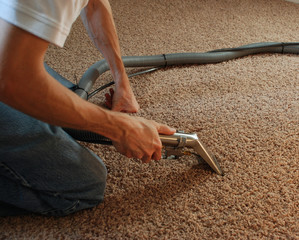Actress Natalie Wood drowned at the height of her fame in 1981, and her death remains one of Hollywood’s great mysteries. Fresh scrapes and bruises on her body led investigators to believe she had been assaulted, but the coroner ultimately ruled that her death was accidental.
Wood was aboard a yacht with actor Christopher Walken and the boat’s captain, Dennis Davern. But their accounts of what happened have shifted over time, raising suspicions of foul play. Keep reading the article below to learn more about Who Killed Natalie Wood.

What Happened to Natalie Wood?
Actress Natalie Wood was just 43 when she drowned in the Pacific Ocean off Catalina Island in November 1981. Despite her roles in classics such as West Side Story and Rebel Without a Cause, she was fading from the spotlight, with the onset of middle age and rumors of trouble in her marriage to actor Robert Wagner, who was also her co-star on the TV series Hart to Hart.
Her sudden death stunned the world, and remained one of Hollywood’s greatest mysteries for four decades. But now, a new book by forensic pathologist Sam Perroni has shed shocking light on the case and on the corrupt motives that influenced its outcome.
Wood was found dead in her flannel nightgown and down jacket in the water near the yacht Splendour, where she had spent several hours drinking with Wagner, Walken and the ship’s young captain, Dennis Davern.
The original investigators believed that Wood fell off the boat into a dinghy, which bore scratch marks from a struggle. But nail clippings were never taken from the body to determine whether she made the scratches herself, and the dinghy is no longer available for examination. It was a dark, foggy night, and it’s impossible to tell whether her fall was intentional or accidental.
In addition, Wood had a lifelong fear of water and had been told by a fortune teller as a teenager that she would die in the sea. It has been suggested that her fear caused her to ignore a warning from Davern to avoid going into the water, or that she was trying to pilot the dinghy in an inebriated state and fell in.
In his new book, Perroni reveals that the bruises on Wood’s body were more than just from her fall, and that she was likely kicked or punched while in the water. He cites evidence such as an audiotape of a voice that sounds like Wood’s saying, “Come on! Get me out of here!” as well as new statements by Davern that he lied during the initial investigation under pressure from Wagner.
The Night She Died
A Hollywood icon in life, Natalie Wood was equally alluring in death — and her mysterious drowning remains one of Tinsel Town’s great mysteries. Using new evidence, including a never-before-heard autopsy report, Brainstorm explores the night that Hollywood’s alluring siren went missing and died.
On the evening of Nov. 29, 1981, Wood, who was 43 at the time, went on a yacht trip with her husband, Robert Wagner, and their costars Christopher Walken and Dennis Davern. She was a three-time Oscar nominee for her roles in “West Side Story,” “Rebel Without a Cause” and other hits.
By early the next morning, Wood was missing. An analysis of her stomach contents placed her last meal at about midnight. An hour after that, Wagner made a radio call to report her missing at about 1:30 a.m. Her body was found four hours later in a cove called Blue Cavern Point.
At first, investigators assumed that Wood slipped from her dinghy, which was attached to the couple’s yacht, The Splendour, and drowned. But the actress was known to be terrified of deep, dark water and would not have left the boat on her own. Her sister Lana also testified that she would not have gone to the dinghy in a nightgown.
The original investigation was stymied by a lack of physical evidence and a lack of clarity about what actually happened to the star. For more than 40 years, people wanted answers about why she disappeared. But speculative stories were all they could get, until now.
Sheriff’s homicide detective Ralph Hernandez has reopened the case and, in this book, takes us along for the ride. He interviews medical experts, including former chief medical examiner for Rhode Island Dr. Christina Stanley, who explains the significance of unexplained bruising on Wood’s back and body and sheds light on a bruise in her throat that could have been caused by a thumbnail or fingernail. He also interviews Pamela Eaker, the coroner’s first responder sent to Catalina Island after Wood’s death and who has long believed that her findings were tampered with.
The Autopsy
In the wake of Natalie Wood’s mysterious death in 1981, it was revealed that she had fresh bruises on her body — bruises not consistent with falling overboard from a boat. But for 40 years, investigators have struggled to hold anyone accountable for her death. That changed when LA County sheriff’s homicide detective Ralph Hernandez reopened the case. He uncovered a never-before-heard autopsy report that changes everything we thought we knew about the Hollywood legend’s final hours.
The report from the Los Angeles County Medical Examiner’s Office cited fresh scrapes and bruises on Wood’s arms and knee as evidence she may have been assaulted before she died. The report also revealed that the actress had a blood alcohol level of 0.14 percent. But the sheriff’s department never acted on those findings.
Instead, the investigation was glossed over by local law enforcement agencies, and powerful Hollywood insiders influenced the results of the original investigation. Using official records and photographs, as well as interviews with witnesses and forensic experts, journalist Sam Perroni brings new insight to the case. The result is the most far-reaching and in-depth examination of this enduring mystery to date.
Perroni reveals that the coroner at the time, Dr. Thomas Noguchi, who had grabbed headlines with sensational news conferences following the deaths of Marilyn Monroe, Janis Joplin, and United States Senator Robert Kennedy, did not follow the standard procedures for an autopsy. In the process, he made false claims about the cause of death in each case.
The night before Wood’s death, she and her three companions – actor Christopher Walken, Wagner, and captain Dennis Davern – enjoyed dinner at Doug’s Harbor Reef in Catalina Island. Employees later told investigators that the group drank heavily throughout dinner. They left the restaurant at 10:30 p.m. to re-board the Splendour.
At 8am the next day, authorities found her lifeless body floating in the water 1.6 kilometers from the boat. The small dinghy was beached nearby. Her cause of death was ruled as accidental drowning.
Over the years, Walken and Wagner both gave conflicting accounts of what happened on the night of Wood’s death. Walken did say he and Wagner had argued, but he said the argument was not physical and it didn’t involve her. Wagner, however, has never admitted to any involvement in her death.
The Case Reopened
For decades, Natalie Wood’s death was classified as an accident. The 43-year-old actress went missing from the yacht Splendour at 3am on November 28, 1981, along with her husband Robert Wagner and co-star Christopher Walken. Her body was found the following day, a short distance away from the boat, floating in the water. The cause of death was listed as “probable drowning.” But the bruises and abrasions on her body, which appeared fresh to the coroner, raised suspicions of foul play. In 2018, police reclassified the case as suspicious and named Wagner, now 91, a person of interest.
In her life, Wood was a beloved star. She appeared in a string of classic films, playing roles ranging from straight-arrow reliable to high-strung and neurotic. Although her personal life was turbulent — she and Wagner fought often, with the couple’s rift intensifying over their differences on-screen — fans remembered her as one of Hollywood’s most alluring actresses.
But the real-life story behind her death is as murky as the movies she starred in. In his new book, author Sam Perroni examines the case with an investigative mindset, methodically building a strong argument for whether Natalie Wood was murdered and if so, who did it.
Perroni’s book reveals that the original investigation was clouded by a number of inconsistencies and holes in witness testimony. His research also unearthed evidence indicating that several of the bruises on Wood’s body were likely not fresh when her body was initially discovered.
Another red flag was the fact that the three men on board the yacht — Wagner, Walken and Davern — told investigators that they assumed Wood took off in the dinghy to go ashore. But the actress couldn’t operate the dinghy, couldn’t swim and had a severe phobia of dark water, which stemmed from a prophecy her mother received from a fortune teller.
For years, Davern has maintained that the official account of what happened is not true. He voiced his suspicions on a 1992 Geraldo Rivera special, in a 2000 Vanity Fair article and in his 2009 book, Goodbye Natalie, Goodbye Splendour. He has refused to speak with authorities again, but in a recent interview on CBS News, his daughter Natasha Gregson Wagner insisted that her father had nothing to do with her mother’s death.

